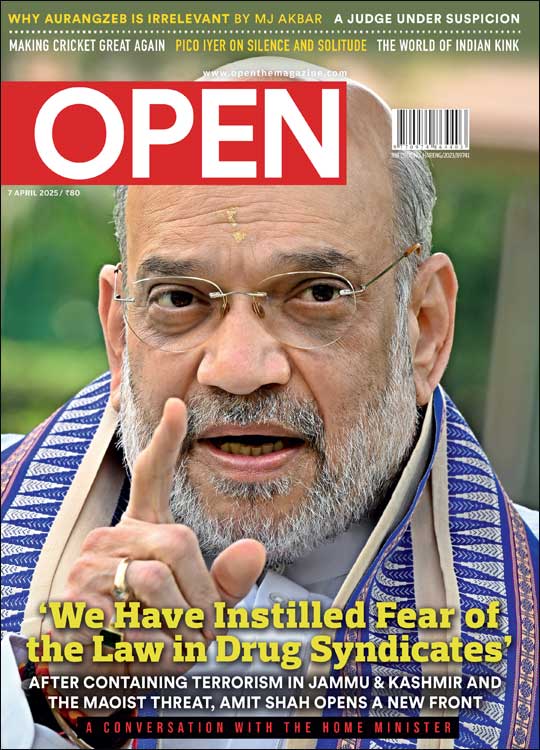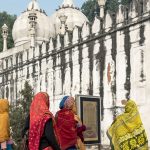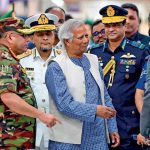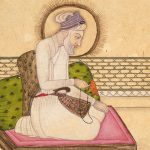/wp-content/uploads/2017/10/Britishmind1.jpg)
THE 70TH ANNIVERSARY of Indian independence has triggered a remarkable outpouring of post- colonial guilt in Britain and anti-Raj anger in India. For a younger generation, who have no first-hand experience of it, empire is now a dirty word, an evil occupation of other people’s countries in order to plunder their wealth. The idea that imperialism could be a benevolent, modernising force, involving collaboration and exchange between rulers and ruled, is now deeply unfashionable. And yet the survival of the British Raj in India for almost two centuries is impossible to explain without understanding such dialogue and partnership.
Far from wanting to colonise the minds of their new subjects, most founders of British rule were fascinated by India’s traditional arts and crafts and keen to explore the wonders of its classical past. The tone was set by the first Governor-General, Warren Hastings, who mixed freely with Indians, was fluent in two vernacular languages, Hindustani and Bengali, and also spoke some Persian, then the court language of the Mughal Empire. As the most powerful man in India, he was determined to rule, as far as possible, through Indian officials and according to traditional Mughal laws and customs.
Hastings began India’s equivalent of the European Renaissance. Its nucleus was the Asiatic Society of Calcutta, founded in 1784 and modelled on the Royal Society in London. At its head was one of the greatest polymaths of the European enlightenment, Sir William Jones, Orientalist, philologist and jurist, who combined his role as judge in Calcutta’s new Supreme Court with the codification and translation of India’s laws and customs. The Asiatic Society brought the print revolution to India. Its publication of a Bengali grammar was the first work in any Indian language to be printed, and it began a flow of journals dedicated to the study of India’s classical Hindu and Buddhist past. The Governor-General himself was an eager patron of Sanskrit, the language of India’s ancient religious texts, now seen as the root of Indo-European languages and part of a shared Aryan heritage. Sanskrit, like medieval Latin, had become the preserve of India’s narrow Brahmin priestly caste. But the Orientalists opened up the Sanskrit classics to Europeans and other Indians by translating and printing them in English and the Indian vernaculars. Hastings personally funded a translation of the Bhagavad Gita, and wrote an enthusiastic introduction to it.
The early Indian Orientalists had to do without the aid of past historians, since ancient India, unlike classical Greece and Rome, had left behind no histories of its own. India’s past had to be reconstructed from ancient stones and ruins, from lost pavilions and buried treasure. The Asiatic Society succeeded in mobilising an enthusiastic volunteer army of amateur archaeologists from among the British civil and military officers stationed in the districts. They were encouraged to spend their leisure exploring local monuments, collecting their artefacts and publishing their findings in the Society’s journals. It was their efforts that led to the excavation and conservation of some of ancient India’s most iconic sites—Elephanta and Ajanta, Kanheri and Ellora, Khajuraho and Mahabalipuram.
Almost a millennium of conquest and dominion by Muslim settlers had created a major hiatus with the pre-Islamic past. But British Orientalists were responsible for two dramatic chronological breakthroughs. The first was down to Sir William Jones himself. Having mastered Sanskrit, he managed to identify Chandragupta Maurya as the 4th century BCE Indian king who received the Greek historian-cum-diplomat, Megasthenes. It was a discovery which enabled Indian history to be dated back to the Buddha. Half a century later, another outstanding British polymath, James Prinsep, took this one step further by deciphering the forgotten Brahmi script, thereby revealing the edicts carved into bronze pillars by the Mauryan Emperor Ashoka. As Secretary of the Asiatic Society, Prinsep was a prime example of the brilliant amateurism of British Orientalists. He was not a historian but a numismatist working in the East India Company’s mint; and yet his work deciphering coin inscriptions led him to the greatest discovery in Indian historiography.
Most founders of British rule were fascinated with India’s classical past. The tone was set by the first Governor-General Warren Hastings who mixed freely with Indians and was fluent in two vernacular languages
Today Ashoka, reigning over an empire which encompassed the whole subcontinent, is the most powerful nationalist symbol of India’s past. But few Indian nationalists would concede that they owe that memory to a British official. Instead, the nationalist narrative accuses Western Orientalists of using their scholarly pursuits as yet another form of colonial appropriation, documenting India in order to rule it more effectively. An important element of this theory of cultural imperialism is the notion that Western rulers not only appropriated Indian cultural traditions for their own ends, but also systematically uprooted and replaced them with a Western education system designed to colonise the minds of Indians.
The controversy over colonial education in India came to a head in the 1930s in a debate between Mahatma Gandhi and the eminent British educationist Sir Philip Hartog, who had spent many years as an education advisor in India. In London for the Round Table Conference on India’s constitutional future, Gandhi delivered a much-publicised lecture at Chatham House. “Today India is more illiterate than it was fifty or a hundred years ago…,” he declared, “because the British, instead of taking hold of things as they were, began to root them out. They scratched the soil and began to look at the root, and left the root like that, and the beautiful tree perished.”
Hartog, who was in the audience, promptly wrote to Gandhi pointing out that, according to census figures, male literacy in British India had steadily, if not spectacularly, increased— from 8 per cent in 1881 to 14.4 per cent in 1921. The two men exchanged letters and met to discuss their differences. While Gandhi cited the near universal prevalence of village schools in the pre-colonial period, Hartog pointed out that mere numbers in school were a far from accurate index of literacy. The Mahatma, he urged, should publicly withdraw his mistaken claims about Indian literacy declining under the Raj. Gandhi, now back in India and busy with his civil disobedience campaigns, pleaded lack of time to research his own position. ‘My prejudice or presentiment,’ he wrote to Hartog, ‘still makes me cling to the statement I made at Chatham House.’
Thomas Macaulay transferred state funding from the Orientalist study of Sanskrit and Arabic to English-medium education in modern subjects. ‘Macaulay’s Children’ is a term still used by nationalists to brand their anglicised compatriots as imperialist lackeys
There the correspondence ended, but the argument about the beautiful Indian knowledge tree that the British allegedly uprooted goes on. At its root lies the fact that the only surviving reports about Indian education, before and during the early Raj, come from foreign observers. Indeed, the only eyewitness account of pre-colonial academic life in India is from the intrepid 17th century French traveller, Francois Bernier. He spent eight years in India, first as physician to the Mughal crown prince, Dara Shikoh, and then at the court of the brother who killed and usurped him, Emperor Aurangzeb.
‘The country is ruined,’ Bernier wrote home, without any trace of irony, to the Sun King, Louis XIV, ‘by the necessity of defraying the enormous charges required to maintain the splendour of a numerous court, and to pay a large army maintained for the purpose of keeping the people in subjection. No adequate idea can be conveyed of the sufferings of that people. The cudgel and the whip compel them to incessant labour for the benefit of others…’
Bernier was equally scathing about the Hindu holy city of Benares, regarded as ‘the Athens of India’. There was nothing there approaching a decent university; neither colleges nor classes, just small groups of disciples under religious gurus, housed in the homes of rich merchants. The students were generally indolent, and their studies might drag on for more than a decade, with a curriculum based on Sanskrit and the study of holy texts. When it came to philosophy, Bernier condemned ‘the extreme ignorance’ of the teachers, who ‘make a thousand foolish and confused observations’. He was even more scornful of Hindu astronomy and geography. Students were taught ‘that the world is flat and triangular’, divided up into seven continents surrounded by seas of milk, butter, sugar and wine, ‘the whole… supported on the heads of a number of elephants, whose occasional motion is the cause of earthquakes.’ There was no understanding of anatomy, because caste taboos forbade dissection, but the gurus ‘affirm that the number of veins in the human body is five thousand, neither more nor less; just as if they had carefully reckoned them’.
In 1882, Lord Ripon, another liberal Viceroy, appointed a commission to enquire into ‘the present state of elementary education and the means by which this can be everywhere extended and improved’
Bernier’s account, however exaggerated, is a stark reminder of how far pre-colonial Indian education had fallen behind the contemporary European enlightenment of Descartes and Newton, especially in the science and technology that would prove so decisive in the next two centuries. The picture was equally depressing when it came to primary education. Based on figures compiled by British officials in the 1820s and 1830s, some nationalist historians have argued that before the British uprooted “the Beautiful Tree”, every village in Bengal, Madras and Bombay had a school, with pupil attendance rates higher than in contemporary England. But what such statistics disguised was the very primitive schooling on offer in Indian village schools, the absence of printed books and the withdrawal of children before they reached the level of literacy.
Father Bartolomeo, an Austrian priest who spent thirteen years in India in the 1780s, was dismayed by schooling standards in the prosperous, native-administered region of Malabar. ‘Children assemble half-naked under the shade of a coconut tree,’ he wrote. ‘No people… on earth have adhered so much to their ancient usages and customs as the Indians.’ There were no books, blackboards or even slates; pupils traced letters in the sand, prostrated themselves before their teachers and never questioned their authority.
ACCORDING TO THE Delhi-based historian Aparna Basu, the decline in Indian educational standards dated back to the mid-1700s, after the decline of the Mughal Empire, but well before the British took over. ‘The village patshalas,’ she writes, ‘were often housed in shabby dwellings and taught by ill-qualified teachers… There was no fixed class routine, timetable or school calendar. There was no annual examination.’
It was against this background that the British Parliament in 1813 enacted a very modest provision of Rs 1 lakh annually (Rs 50 lakh in today’s money) ‘for the revival and improvement of literature and encouragement of the learned natives of India, and for the introduction and promotion of a knowledge of the sciences…’ Twenty years later, the sum was increased to Rs 10 lakh (Rs 5 crore today), still a drop in the ocean of state education, but well in advance of England, which had no public funds for education till 1834.
This state funding went initially to Calcutta’s Sanskrit College and its Muslim Madrassa, both committed to traditional learning. But there also followed a rapid expansion of the voluntary sector with the ‘Convent Schools’ opened by Christian missionaries. They wrote, translated and printed the first school textbooks in Indian languages and introduced modern schooling, with timetables, grades, classes and teachers specialising in different subjects. In 1816, this educational groundswell produced India’s first Western-style, secular college, the Calcutta Hindu College, founded as a private, joint venture between committed British officials and the new, Western-oriented Bengali elite, led by the great reformer Raja Ram Mohan Roy. Later renamed Presidency College, its secular modernism made it a model for future Indian colleges. Colonial Calcutta also led the way with a new School Book Society, which printed 126,000 free school books in its first four years, and an allied School Society which opened 115 new vernacular schools during the same period.
For conservatives like Viceroy Curzon, Indian universities were becoming a cradle for militant nationalists, socialists and even violent terrorists, nurtured on Western political ideals
Back in London, the East India Company’s directors expressed concern that the spread of Western education might encourage a spirit of rebellion among their Indian subjects. But their new Governor-General, Lord Hastings, (no relation to Warren) replied: “It would be treason to British sentiment to imagine that it could ever be the principle of this Government to perpetuate ignorance in order to secure paltry and dishonest advantages over the blindness of the multitude.” His illustrious deputy in Bombay, Mountstuart Elphinstone, went further in proclaiming education as the stepping-stone to India’s independence and ‘our high road back to Europe’. The Raj, he argued, must sow the seeds of its own dissolution. ‘It is for our interest,’ Elphinstone wrote, ‘to have an early separation from a civilised people, rather than a violent rupture with a barbarous nation.’ Under his leadership, the Bombay Native Education Society published thousands of new school textbooks, many in local languages, opened several new schools, started classes in medicine and engineering and founded the prestigious Elphinstone College.
The idealism of men like Elphinstone coincided during the 1830s with a new strand of British utilitarian thinking that saw Western education as a necessary tool for recruiting India’s middle-class into the colonial administration. The result was an education policy that is still identified with the brilliant, maverick historian-politician, Thomas Macaulay. As education supremo to the reforming Governor-General William Bentinck, Macaulay articulated a policy which transferred state funding from the Orientalist study of classical Sanskrit and Arabic to English-medium education in useful modern subjects.
‘Macaulay’s Children’ is a derisive term still used by Indian nationalists to brand their anglicised compatriots as imperialist lackeys. Macaulay’s Education Minute of 1835 famously spoke of the need to create ‘a class of persons, Indian in blood and colour, but English in taste, in opinions, in morals, and in intellect.’ But those who condemn such colonial elitism never quote Macaulay’s next, far more egalitarian sentence: ‘To that class we may leave it to refine the vernacular dialects of the country, to enrich those dialects with terms of science borrowed from the Western nomenclature, and to render them by degrees fit vehicles for carrying knowledge to the great mass of the population.’ The next century saw British rule in India, constrained both by lack of funds and by the prevailing laissez faire philosophy of government, struggling to serve these twin educational goals. Governor-Generals Bentinck, Auckland and Dalhousie all championed policies of comprehensive primary education based on vernacular schools, but failed to implement them for lack of funds. After the British Crown took over from the Company, Viceroy Lord Mayo again took up the cudgel for vernacular education in 1868 and attacked the so-called ‘filtration theory’, whereby knowledge would trickle down from the upper classes to the masses. “In Bengal,” he lamented, “we are educating in English a few hundred Babus at great expense to the State. Many of them are well able to pay for themselves, and have no other object in learning than to qualify for Government employ. In the meanwhile we have done nothing towards extending knowledge to the millions. The Babus will never do it. The more education you give them, the more they will try to keep it to themselves, and make their increased knowledge a means of tyranny… Let the Babus learn English by all means. But let us try to do something towards teaching the three Rs to Rural Bengal.”
In 1882, Lord Ripon, another liberal Viceroy, appointed a commission to enquire into ‘the present state of elementary education and the means by which this can be everywhere extended and improved’. But despite such efforts, primary education barely kept pace with India’s growing population, and the Raj conspicuously failed in its aim to educate the Indian masses. Far from digging up the roots of indigenous education, as Gandhi claimed, the Raj at worst treated them with benign neglect. Its only consolation might have been the even more abysmal performance of post-independence Indian governments, which had failed to introduce free and compulsory primary education sixty years later.
Higher education fared much better under Macaulay’s reforms. Even at the height of the Mutiny of 1857, Governor- General Canning bravely went ahead with his plans to establish universities at Calcutta, Bombay and Madras. Other cities followed suit; and the numbers of new colleges and college students multiplied rapidly, egged on by a wave of philanthropic endowments by Indian princes and newly enriched business magnates. By 1890, the number of Indians in higher education had risen to 60,000, mainly in the liberal arts and law.
For conservatives like Viceroy Curzon, Indian universities, far from producing Macaulay clones, were becoming a cradle for militant nationalists, socialists and even violent terrorists, nurtured on Western political ideals. In 1901, Curzon, opening a conference on education, referred to ‘a powerful school of opinion which does not hide its conviction that the experiment of English education was a mistake, and that its result has been a disaster… that it has given birth to a tone of mind and to a type of character that is ill-regulated, averse from discipline, discontented, and in some cases actually disloyal.’ It was a fitting testimony to both the predictable and the unintended consequences of British colonial education.
About The Author
CURRENT ISSUE
‘We Have Instilled Fear of the Law in Drug Syndicates,’ says Amit Shah
MOst Popular
4

/wp-content/uploads/2025/03/Cover_Amit-Shah.jpg)















More Columns
BJP allies redefine “secular” politics with Waqf vote Rajeev Deshpande
Elon Musk attracts sharp attack over ‘swastika’ from Indians on social media Ullekh NP
Yunus and the case of a "land locked" imagination Siddharth Singh